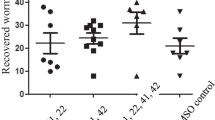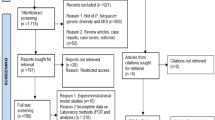Summary
Particularly in Southeast Asia drug resistance has become a major constraint in the treatment of falciparum malaria. So far relatively little is known about the current status of drug resistance in Bangladesh. The aim of this study was therefore to determine the in vitro drug susceptibility of Plasmodium falciparum in south-eastern Bangladesh. In the HRP2 in vitro drug sensitivity assay the tested isolates demonstrated a relatively high sensitivity to dihydroartemisinine (IC50 = 1.33 nM; 95% CI: 1.08–1.63; IC90 = 2.65 nM; 95% CI: 2.13–3.29), mefloquine (IC50 = 11.26 nM, 95% CI: 9.75–13.0; IC90 = 19.55 nM, 95% CI: 15.73–24.29) and quinine (IC50 = 73.24 nM, 95% CI: 65.26–82.21; IC90 = 157.75 nM, (95% CI: 134.16–185.5) thus being significantly more sensitive to mefloquine and quinine than isolates from Thailand. Chloroquine (IC50 = 93.06 nM, 95% CI: 80.38–107.76; IC90 = 214.76 nM, 95% CI: 175.64–262.62) sensitivity was highly compromised with inhibitory concentrations reaching levels comparable to Thailand. Therefore this drug should not be used in the treatment of falciparum malaria in this region. Despite compromised in vitro drug sensitivity to sulfadoxine/pyrimethamine, in clinical studies the combination of sulfadoxine (IC50 = 40.46 µM, 95% CI: 31.15–51.97; IC90 = 173.48 µM, 95% CI: 120.78–249.17) and pyrimethamine (IC50 = 1.7 µM, 95% CI: 1.25–2.3; IC90 = 4.83 µM, 95% CI: 3.17–7.37) with quinine proved to be an interesting option for treating uncomplicated falciparum malaria in Bangladesh.
Zusammenfassung
Die effektive Behandlung der Malaria tropica wird vor allem in Südostasien durch Medikamentenresistenzen zunehmend erschwert. Über den genauen Resistenzstatus in Bangladesch ist jedoch bisher nur wenig bekannt. Ziel der vorliegenden Studie war daher die Bestimmung der in vitro Sensibilität von Plasmodium falciparum im Südosten von Bangladesch, unweit der Grenze zu Myanmar. Die Medikamente Dihydroartemisinin (IC50 = 1,33 nM; 95% CI: 1,08–1,63; IC90 = 2,65 nM; 95% CI: 2,13–3,29), Mefloquin (IC50 = 11,26 nM, 95% CI: 9,75–13,0; IC90 = 19,55 nM, 95% CI: 15,73–24,29) und Chinin (IC50 = 73,24 nM, 95% CI: 65,26–82,21; IC90 = 157,75 nM, 95% CI: 134,16–185,5) zeigten im HRP2 in vitro Medikamentensensibilitätstest dabei adäquate, im Falle von Mefloquin und Chinin sogar eine deutlich bessere Wirksamkeit als in Thailand. Bei Chloroquin (IC50 = 93,06 nM, 95% CI: 80,38–107,76; IC90 = 214,76 nM, 95% CI: 175,64–262,62) fanden sich dagegen ausgeprägte Resistenzen, vergleichbar jenen in Thailand, die eine weitere sinnvolle Verwendung von Chloroquin in der Therapie der falciparum Malaria in dieser Region ausschließen. Trotz offensichtlich verminderter Empfindlichkeit gegenüber Sulfadoxin/Pyrimethamin erwies sich in parallel durchgeführten klinischen Untersuchungen die Kombination von Sulfadoxin (IC50 = 40,46 µM, 95% CI: 31,15–51,97; IC90 = 173,48 µM, 95% CI: 120,78–249,17) und Pyrimethamin (IC50 = 1,7 µM, 95% CI: 1,25–2,3; IC90 = 4,83 µM, 95% CI: 3,17–7,37) mit Chinin als interessante Alternative für die orale Therapie der unkomplizierten falciparum Malaria in Bangladesch.
Similar content being viewed by others
Literatur
Nosten F, Kuile F ter, Chongsuphajaisiddhi T, Luxenburger C, Webster HK, Edstein M, Phaipun L, Thew KL, Whithe NJ (1991) Mefloquin-resistant falciparum malaria on Thai-Burmese border. Lancet 337 (8750): 1140–1143
Wongsrichanalai C, Pickard AL, Wernsdorfer WH, Meshnick SR (2002) Epidemiology of drug-resistant malaria. Lancet Infect Dis 2: 209–218
World Health Organization (2005) World Malaria Report. http://rbm.who.int/wmr2005/profiles/bangladesh.pdf; accessed 14 July 2005
Faiz MA, Yunus EB, Rahman MR, Hossain MA, Pang LW, Rahman ME, Bhuiyan SN (2002) Failure of national guidelines in diagnose uncomplicated malaria in Bangladesh. Am J Trop Med Hyg 67 (4): 396–399
Noedl H, Wernsdorfer WH, Krudsood S, Wilairatana P, Viriyavejakul P, Kollaritsch H, Wiedermann G, Looareesuwan S (2001) In vivo-in vitro model for the assessment of clinically relevant antimalarial cross-resistance. Am J Trop Med Hyg 65 (6): 696–699
Van den Broeck IV, van der Wardt S, Talukder L, Chakma S, Brockman A, Nair S, Anderson TC (2004) Drug resistance in Plasmodium falciparum from the Chittagong Hill Tracts, Bangladesh. Trop Med Int Health 9 (6): 680–687
Rahman A, Kogan F, Roytman L (2006) Analysis of malaria cases in Bangladesh with remote sensing data. Am J Trop Med Hyg 74 (1): 17–19
Rosenberg R, Maheswary NP (1977) Chloroquine resistent Plasmodium falciparum in Bangladesh. Trans R Soc Trop Med Hyg 70 (5–6): 533
Rahman MR, Paul DC, Rashid M, Ghosh A, Bangali AM, Jalil MA, Faiz MA (2001) A randomized controlled trial on the efficacy of alternative treatment regimens for uncomplicated falciparum malaria in a multidrug-resistant falciparum area of Bangladesh – narrowing the options for the National Malaria Control Programme? Trans R Soc Trop Med Hyg 95 (6): 661–667
Faiz MA, Yunus EB, Rahman MR, Hossain MA, Pang LW, Rahman ME, Bhuiyan SN (2002) Failure of national guidelines to diagnose uncomplicated malaria in Bangladesh. Am J Trop Med Hyg 67 (4): 396–399
Noedl H, Attlmayr B, Wernsdorfer WH, Kollaritsch H, Miller RS (2004) A histidine-rich-protein 2-based malaria drug sensitivity assay for field use. Am J Trop Med Hyg 71 (6): 711–714
Noedl H, Bronnert J, Yingyuen K, Attlmayr B, Kollaritsch H, Fukuda M (2005) Simple histidine-rich protein 2 double-site sandwich enzyme-linked immunosorbent assay for use in malaria drug sensitivity testing. Antimicrob Agents Chemother 49 (8): 3575–3577
Noedl H, Wernsdorfer WH, Miller RS, Wongsrichanalai C (2002) Histidine-rich protein II: a novel approach to malaria drug sensitivity testing. Antimicrob Agents Chemother 46 (6): 1658–1664
Dondorp A, Nosten F, Stepniewska K, Day N, White N; South East Asian Quinine Artesunate Malaria Trial (SEAQUAMAT) group (2005) Artesunate versus quinine for treatment of severe falciparum malaria: a randomised trial. Lancet 366 (9487): 717–725
Van den Broek IV, Maung UA, Peters A, Liem L, Kamal M, Rahman M, et al (2005) Efficacy of chloroquine + sulfadoxine – pyrimethamine, mefloquine + artesunate and artemether + lumefantrine combination therapies to treat Plasmodium falciparum malaria in the Chittagong Hill Tracts, Bangladesh. Trans R Soc Trop Med Hyg 99 (10): 727–735
Noedl H, Wongsrichanalai C, Wernsdorfer WH (2003) Malaria drug-sensitivity testing: new assays, new perspectives. Trends Parasitol 19 (4): 175–181
Author information
Authors and Affiliations
Corresponding author
Rights and permissions
About this article
Cite this article
Attlmayr, B., Thriemer, K., Haque, R. et al. Untersuchungen zur in vitro Arzneimittelresistenz bei Malaria tropica in Bangladesch. Wien Klin Wochenschr 118 (Suppl 3), 58–61 (2006). https://doi.org/10.1007/s00508-006-0672-4
Issue Date:
DOI: https://doi.org/10.1007/s00508-006-0672-4




